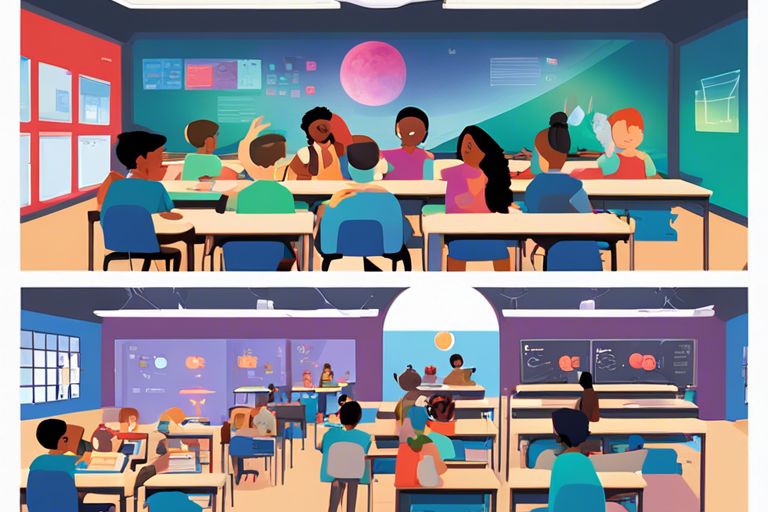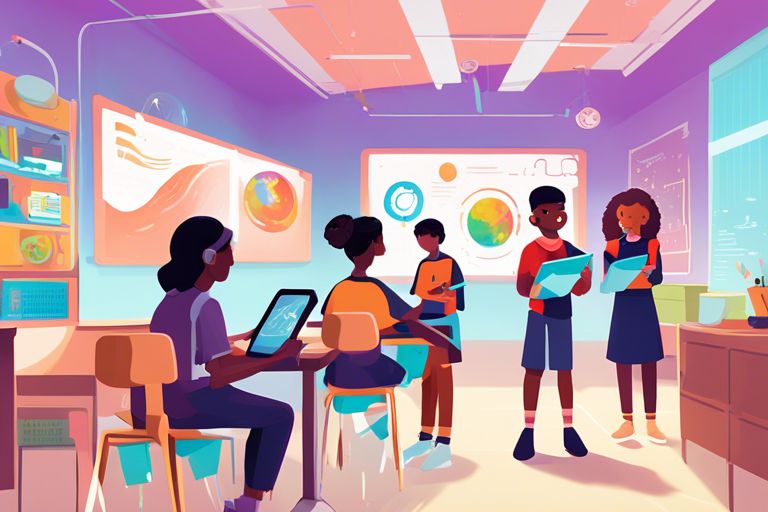Embarking on the journey of education can be daunting, especially when it comes to harnessing the full potential of learning. However, with the right strategies in place, Halfmoon Education offers a unique and powerful approach to unlocking the full scope of knowledge and understanding. In this blog post, we will delve into 10 proven strategies that will help you maximize your learning potential, increase retention, and achieve academic success through Halfmoon Education. From effective study habits to utilizing cutting-edge technology, these strategies will revolutionize the way you approach your education, enabling you to thrive in the academic sphere.
Customizing Learning Environments
As educators, we understand the importance of creating a learning environment that fosters individual growth and success. The concept of halfmoon education emphasizes the need to customize learning environments to meet the diverse needs of students. By implementing strategies to tailor these environments, we can create a more inclusive and effective educational experience for all learners.
Strategy 1: Tailored Learning Spaces
Strategy 1: Tailored Learning Spaces focuses on the physical layout and design of the classroom. By customizing the learning space to suit the needs of different learners, educators can create an environment that is conducive to learning. This may include creating designated quiet areas for independent work, flexible seating options to accommodate different learning styles, or utilizing technology to enhance the learning experience.
Strategy 2: Adaptive Technology Integration
With Strategy 2: Adaptive Technology Integration, educators can harness the power of technology to customize the learning experience. By incorporating adaptive technology tools, such as assistive devices, learning management systems, and interactive learning platforms, educators can create a more accessible and inclusive learning environment for all students. This strategy ensures that technology is leveraged to meet the individual needs of learners, leveling the playing field and promoting equal opportunities for success.
The use of adaptive technology in the classroom can help students with diverse learning needs to engage with the curriculum in a way that suits their individual abilities. This fosters independence, confidence, and a sense of empowerment among learners, ultimately leading to positive learning outcomes.
Enhancing Teaching Methodologies
While the Halfmoon Education platform offers a wide range of tools and resources for educators, it is essential to enhance teaching methodologies to maximize the effectiveness of the platform. By utilizing innovative and research-based strategies, educators can create an engaging and impactful learning experience for their students.
Strategy 3: Interactive and Collaborative Techniques
Enhancing teaching methodologies with interactive and collaborative techniques is essential for creating an engaging and dynamic learning environment. Implementing group activities, discussions, and peer collaboration not only enhances students’ understanding of the material but also fosters important communication and teamwork skills. By encouraging active participation and collaboration, educators can ensure that students are fully engaged in the learning process, leading to improved outcomes and a deeper understanding of the subject matter.
Strategy 4: Incorporating Project-Based Learning
Interactive and collaborative techniques are fundamental for enhancing teaching methodologies, but incorporating project-based learning takes it a step further. By integrating real-world projects and hands-on activities, educators can provide students with the opportunity to apply their knowledge in practical and meaningful ways. This approach not only enhances their critical thinking and problem-solving skills but also fosters a deeper understanding of the subject matter.
A well-designed project-based learning experience can ignite students’ curiosity and excitement, leading to a more profound and lasting impact on their learning journey. By incorporating project-based learning into teaching methodologies, educators can effectively prepare students for future success in their academic and professional endeavors.
Strategy 5: Gamification in Education
Any effective teaching methodology should include elements of gamification to promote student engagement and motivation. By incorporating game-like elements such as rewards, competition, and interactive challenges, educators can create a more dynamic and immersive learning experience. Gamification not only makes learning more enjoyable but also reinforces important concepts and skills in a memorable way.
Collaborative and interactive techniques, combined with project-based learning, can lay a solid foundation for integrating gamification into the teaching methodology. This holistic approach not only enhances the overall learning experience but also cultivates a positive and inclusive classroom culture that promotes student success.
Fostering Student Engagement
For halfmoon educators, fostering student engagement is a top priority. When students are engaged, they are more likely to be motivated, participate actively in learning, and achieve better academic outcomes. By implementing various strategies to foster student engagement, educators can create a positive and inclusive learning environment that caters to the diverse needs of their students.
Strategy 6: Mastery and Competency-Based Approaches
Engagement in learning is heightened when students are given the opportunity to demonstrate mastery and competency in their own time and pace. Halfmoon educators can promote engagement by allowing students to progress through the curriculum based on their understanding and skill acquisition, rather than adhering to traditional one-size-fits-all timelines.
Strategy 7: Use of Formative Assessments
For halfmoon educators, the use of formative assessments is an essential strategy to gauge student understanding, identify learning gaps, and provide timely feedback for improvement. By incorporating formative assessments into the teaching process, educators can track student progress and make informed instructional decisions to enhance student learning.
A well-executed formative assessment strategy leads to a greater understanding of individual student needs, resulting in a more targeted and effective approach to addressing student learning gaps.
Strategy 8: Student Autonomy and Choice
One effective way to boost student engagement is by offering autonomy and choice in their learning journey. When students have the freedom to make decisions about their learning path, they are more motivated and invested in the process, leading to a more meaningful and personalized learning experience.
Plus, student autonomy and choice foster a sense of ownership over their education, empowering students to take charge of their learning and develop critical thinking skills in the process.

Evaluating and Sustaining Progress
Not only is it important to implement effective educational strategies, but it is equally crucial to evaluate and sustain the progress made. Evaluating progress allows educators to identify areas of improvement and make necessary adjustments to achieve desired outcomes. Moreover, sustaining progress ensures that the positive changes are maintained over time, resulting in long-term benefits for students.
Strategy 9: Continuous Feedback Mechanisms
One of the key elements in evaluating and sustaining progress is the implementation of continuous feedback mechanisms. These mechanisms allow educators to gather valuable insights into the effectiveness of their teaching methods and the progress of their students. By consistently collecting feedback from students, parents, and other stakeholders, educators can identify areas that need improvement and make timely adjustments to their strategies.
Strategy 10: Longitudinal Achievement Tracking
Sustaining progress also involves tracking the long-term achievement of students. By consistently monitoring student performance over time, educators can identify patterns of growth or areas of concern. This longitudinal tracking allows for targeted interventions to support students in reaching their full potential and ensures that progress is maintained over the long term.
Feedback mechanisms and longitudinal achievement tracking play a crucial role in evaluating and sustaining progress in halfmoon education. By gathering continuous feedback and tracking the long-term achievement of students, educators can make informed decisions to improve their teaching methods and ensure that positive progress is sustained over time.
Unlocking The Power Of Halfmoon Education – 10 Proven Strategies
Taking this into account, it is clear that the 10 proven strategies outlined in this guide have the potential to revolutionize and transform the educational experience for both students and educators alike. By implementing these researched-based techniques, schools can enhance student engagement, improve academic performance, and foster a positive learning environment. Halfmoon Education has harnessed the power of these strategies to create a comprehensive approach to education that prioritizes innovation, collaboration, and student success. As the landscape of education continues to evolve, it is imperative for schools to embrace these proven strategies in order to unlock the full potential of their educational programs.
